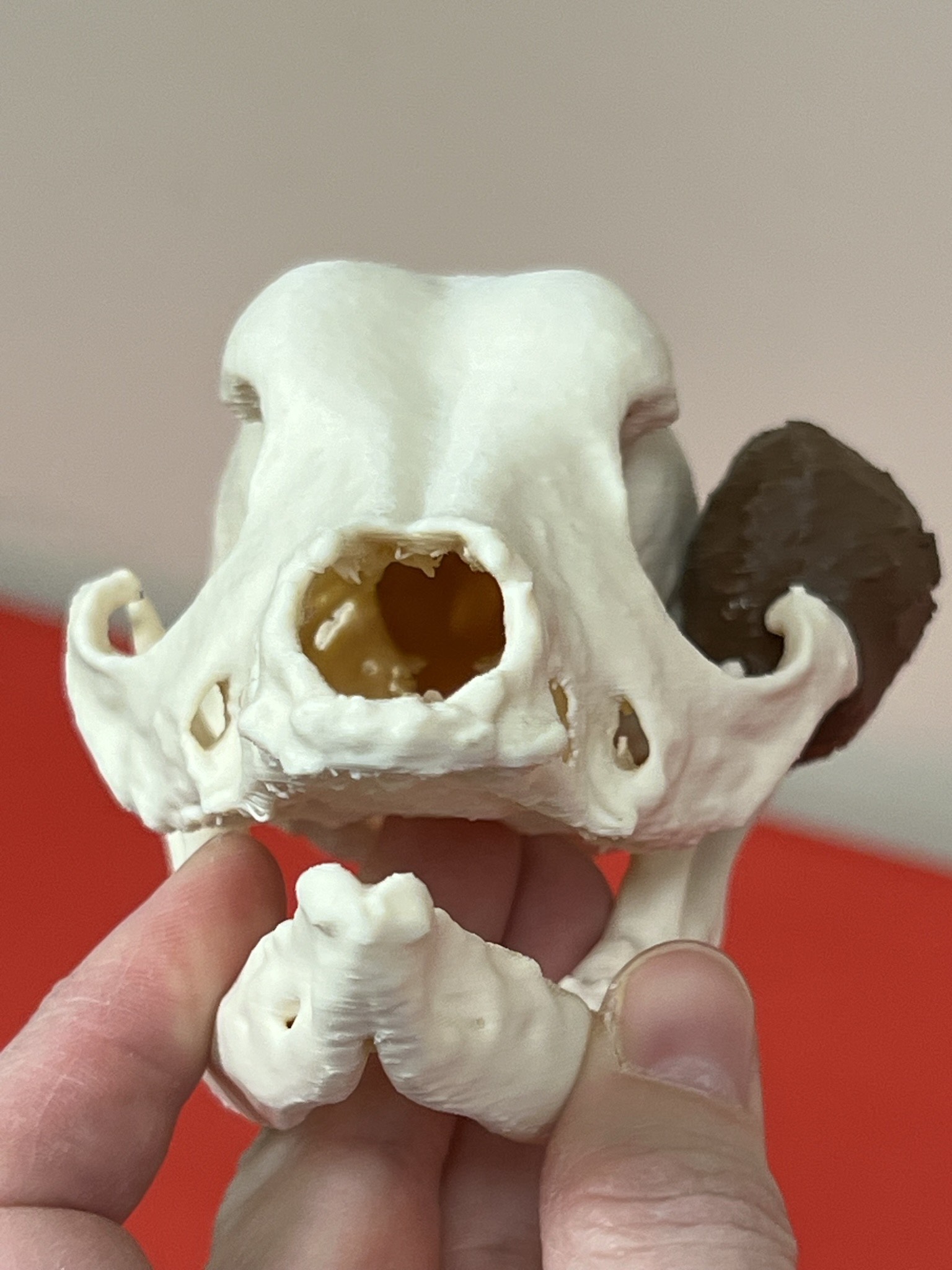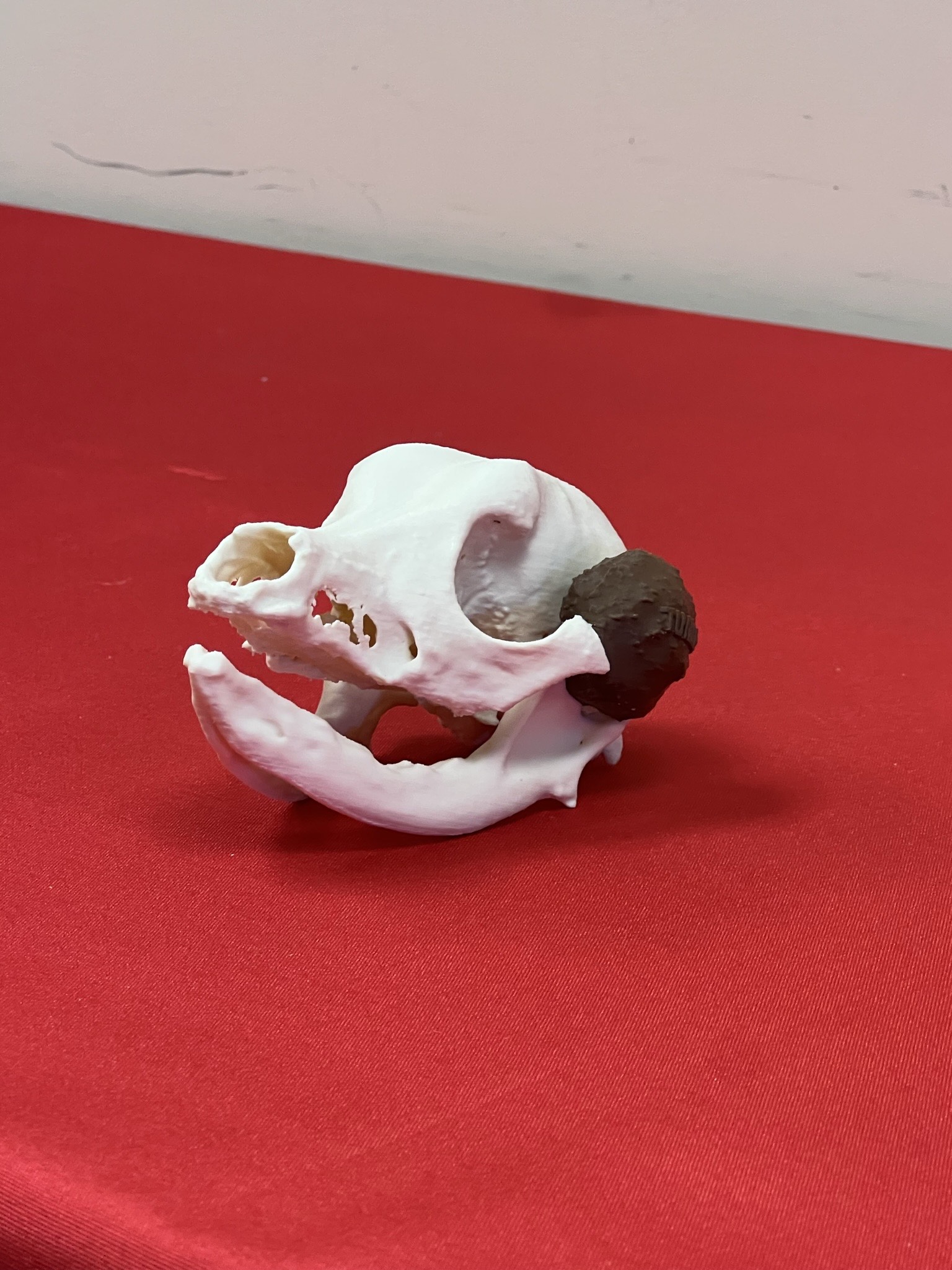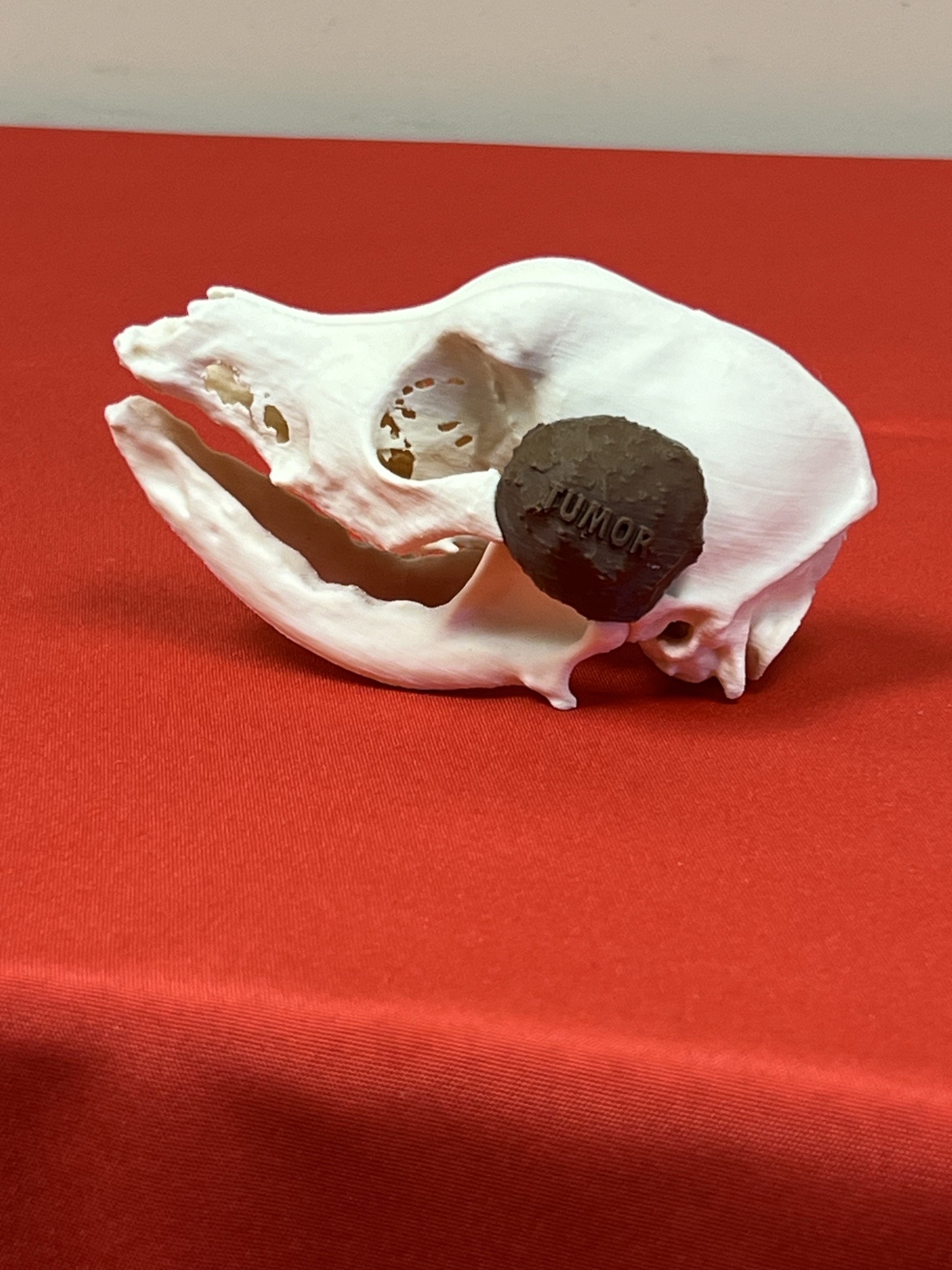How 3-D modeling is changing the game for veterinary surgeries
Recently, we sat down with Dr. Alexander Geddes – our dental specialist here at CUVS – to talk about 3-D modeling and its impact on surgeries, specifically those relating to dentistry, oral, and maxillofacial disease.
Tell us about the 3-D modeling process and what you’re using it for.
We are working with a vendor called Med Dimensions, who provide custom patient surgical planning and assistance solutions. The company was founded by a few young entrepreneurs, including a Cornell veterinary student, so we’re excited to be able to support this venture.
Together with Med Dimensions, we’re using CT scans of patients and print models of the scans to create exact, life-size, 3-D replicas of the patient’s skull and the disease associated with their skull. Predominantly, we use it for tumor or cancer cases, but these models can also be used for trauma cases. In regards to a trauma case, I’ve used it for a cat that was hit by a car and had broken their face in a very complicated fashion. 3-D modeling allows us to pre-plan surgeries in a way we couldn’t do before.
How does this change the way surgeries are performed?
With traditional contemporary methods of surgical planning - we are relying on the CT scan for both the identification of the problem and planning. While this imaging can help us visualize treatment, and even digitally plan care - that’s the extent of its use. 3-D printing takes planning to the next level: having a life-size model in our hands can’t be rivaled by digital tools - surgery is all about working in 3D space. We can print customized surgical guides and pre-prepare implants so that when we are in surgery everything is ready to just put in place. These additional preparations can shave valuable minutes - if not hours out of operating time. Whether this is for tumor removal or trauma repair - the benefits of this are obvious and significant: reduced surgical time and complications for the patient - with improved outcomes. I would say the overall medical costs are reduced too. While prints and planning come with costs; these are reaped back in surgery - to the benefit of all.
The more complicated the case, the more there is to gain from this technology. And so, I reach a threshold with a proportion of cases I see here, where I have determined that it is overall beneficial to invest the time into preparing these models and having them sent here.
Will you always go through Med Solutions or is there a way to bring it in-house?
Some of this could be done in-house if we had a 3-D printer. But the nice thing about working with Med Dimensions is that they have a growing team of experts who can provide added value to the planning stage. For example, it’s very easy to take a CT scan and put it into 3-D printing software, and print the skull. Where it becomes more complicated is superimposing the problem into the skull. So far, someone has had to manually say on the scan, here’s the skull, and here's the tumor. They have to tell the printer what’s what – it’s not all automatically done. And now Med Dimensions are even working on automation for this preparation - that’s definitely not something I could harness with available open-source software and hours of my own time. So I see great value in working with a professional company such as theirs.
So, can we do this in-house? Yes - at least the basics. But every month Med Dimensions and I are working on more complicated and exciting cases. During my residency, my colleagues were breaking ground on custom printing titanium plates for facial reconstruction. There are some challenges in our veterinary patients that can’t be solved with commercially available hardware that is ultimately designed for humans. Med Dimensions and I are excited to explore this cutting-edge area. You need industrial-level 3D printing to work with titanium and actually print the implants - not just the models and guides - so their expertise and infrastructure continue to be indispensable.
What’s the turnaround time to get these models?
If we have an urgent trauma case, Med Dimensions can prioritize and get things turned around in maybe two days, from the scan to arriving at CUVS. The typical process is about three to five business days – usually within the week. If we’ve got a tumor case, where we’re doing some planning and scanning anyway, they’re very good at triaging and accommodating based on urgency.
The turnaround time can be a downside when using an external company, but the upside is that you get their professional expertise. For most people who are bringing their pets to CUVS for these types of complex surgeries, the additional cost of planning is a small piece of the puzzle. It legitimately saves time on the rest of the medical plan in terms of cost. It comes out as a wash, if not a win from a cost perspective.
How does it improve the process behind the scenes?
For me, it’s the medical side. Every minute extra in the OR for the patient brings the risk of detriment to them. We know from this being done on humans and now on veterinary patients for enough years that we can see an overall reduction in risk and complications because of this technology. So, there are tangible medical risk reductions and benefits to the patient.
Overall, it’s a balance. The more complex the case is the less I’m comfortable doing the procedures without it. 3-D modeling brings a level of reassurance and rehearsal because, in my opinion, the key to executing the most complicated surgeries that we offer here – which are the most complicated surgeries that can be done on the face – is very, very precise planning and preparation that really can make or break these cases. They’re not cases where we see the client for a consult and the next day we’re just casually walking into the OR. We’re talking about cases that require hours of planning, sometimes over days or even weeks. Using this technology best prepares us and the families for the procedure ahead - and we’re excited to see where this technology takes us next!



